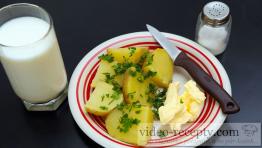Hatching of Artemia salina + tips and tricks
There are still thousands of aquarists who can not only correctly hatch Artemia, but also modify the hatch for certain fish species. For them, I have compiled this video tutorial.
Directions
- Basic hatching of Artemia salina start by finding a suitable container for hatching. You can use a cut-off pet bottle, or even a large bottle of cucumber.
- For the first familiarization with hatching of brine shrimp (Artemia salina) weigh 20 g of salt per 1.5 liters of water, which is approximately 2 level teaspoons.
- Into a container pour 1/2 liter of water at about 25 to 30°C, put air stone to vigorously move water, add salt, and dye water with acriflavin. It is used to prevent proliferate mold. Acriflavin prevents it in the way that very effectively slows down cell division.
- Now measure the pH. It should be around 8°, because brine shrimp live in places with very high pH. When the pH is too low, add bicarbonate soda (Na2CO3). It should be enough just as much as the volume of a pea.
- Add the brine shrimp eggs. Remember that with 1/2 teaspoon of eggs we feed hundreds of fish, so add it in proportion to their consumption. Into 1/2 liter of water put 1 level teaspoon off eggs.
- The first hour the eggs settle just above the surface, so stir the water several times. The water must circulate so that the eggsdo not settle anywhere but flow in water.
- A common beginners mistake is that they hatch Artemia in the dark. It should always be ensured at least a weak continuous light.
- Artemia salina hatch, depending on the point of capture and the temperature within 24 to 48 hours. The temperature should be between 23 to 30°C, ideally about 27°C.
- When Artemia is hatched, remove air stone and let the water calm down. Eggs and empty shells go to the surface, hatched brine shrimp goes to the bottom. From there, they can be sucked out by a tube into another container.
- Strain the water with Artemia and use them immediately. In aquarium put just as much as the fish will eat within a few minutes. They will not last too long in a fresh water.
- If you hatched too much put the rest back into the hatching container and use it in the evening or the next day.
- The eggs should be stored in a cool, dry place, otherwise, hatchability begins to decrease rapidly.
TIPS AND TRICKS:
If you want to feed newly hatched fish, for example tetras, you should be a real professional. It is necessary to hatch Artemia salina only a moment before feeding, because within a few hours it doubles or triples its size, and for a small fish it is just too big and also dangerous because of choking hazard. This can greatly affect the water temperature. Therefore, some breeders have hatchery Artemia in different height of a room where the temperature varies.
On the contrary, older fish should be fed by two-day Artemia. Therefore, professional aquarists have several containers for breeding and they use different Artemia for various old fish.
Some breeders pour the rest of hatching container to adult fish. However, Chitin shell from the Artemia is unpalatable to fish.
Alpha and Omega of the success with Artemia is a patience. If you bring a new Artemia, then you can watch a video instructions, but it is necessary to reduce a dosage of salt and bicarbonate soda to the minimum level at which it is still sufficiently guaranteed hatchability. It's because if you feed freshly hatched neon tetras, they live in almost demineralized water. Adding brine shrimp will degrade the water. Less experienced aquarists will evaluate this failure as feeding with shrimp that was too big. The same can be said for the high pH of water on hatching. It is desirable to have a pH as low as possible, almost all screeds are kept at a slightly alkaline pH.
It goes without doubt, and every professional aquarist will prove that there are some companies supplying eggs from which you hatch very tiny brine shrimp, and from others you get several times larger Artemia. This is another common cause of failure.
Aquaristics is very complex and interesting science. You should be able to carefully perceive even small differences and be prepared to apply them at the appropriate moment.
- weigh 20g salt... (2 level teaspoons)
- in a container put 1/2 liter of water (25 - 30°C)... and air stone...
- add 20g salt...
- measure the pH...
- to increase pH add bicarbonate soda (Na2CO3)...
- let it stir...
- check pH...
- dye the water with Acriflavin - against mold...
- and add eggs of Artemia salina... (into 1/2 liter of water put 1 level teaspoon off eggs)
- the first hour the eggs settle just above the surface, so stir the water several times...
- let it hatch in warm and ligt place 24-48 hours...
- after the water calms down the eggs and empty shells go to the surface...
- and hatched Artemia goes to the bottom...
- suck it out with a tube...
- strain it...
- and use immediately...
- dose it in smaller portions so that you do not overfeed...
- view of the beautifully fed fish is breathtaking...



















Komentáře